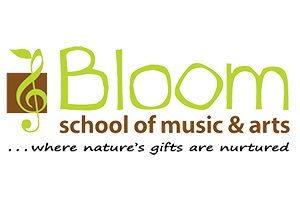Mindful Me: Mental Health Awareness Month

May Buddha enlighten you on the path of truth, love, and peace. Happy Vesak Day!
This year, we celebrate Vesak Day on 26 May, which is also a Public Holiday in Singapore. It is an annual celebration of the birth, enlightenment, and death of Buddha. The date every year is determined by the time of the first full moon in the ancient lunar month of Vesakha.
Buddhism is a faith founded by Siddhartha Gautama more than 2,500 years ago in India, and is considered a major religion in the world. Vesak Day is a special day for all Buddhists. It is a time for mindful reflection on Buddha’s teachings, and a time to spread joy and peace, and well wishes. On this day, many Buddhists participate in good deeds as it is believed that doing so multiplies one’s merit. Also on this day, many Buddhists gather around for the ‘bathing of Buddha’, a sacred ritual of pouring water over the shoulders of Buddha, a practice of which reminds believers to clear their minds of negative thoughts and hatred.
Buddhism has many traditions and teachings that get adapted over time, and are now widely practised. One significant element of Buddhist tradition is mindfulness.
As May is also Mental Health Awareness Month, let us learn a little about Mindfulness.

Mindfulness has its roots in Buddhism (from Sutras, Buddhist writings from 2500BC), as well as other ancient traditions such as yoga, Taoism, mysticism in Christianity, and Sufism. The wonderful infographic above summarises mindfulness, a novel way of experiencing life.
“Mindfulness is being aware, or bringing attention to this moment in time, with intent, and without judgement.”
– Dr Patrizia Collard
People who regularly implement taught mindfulness strategies may find lasting physical and psychological benefits such as:
- Increased experience of calm and relaxation
- Higher levels of energy and enthusiasm for living
- Increased self-confidence and self-acceptance
- Less danger of experiencing stress, depression, anxiety, chronic pain, addiction, or low immune efficiency
- More self-compassion, compassion for others and our planet
To experience ‘being in the now’, here are a few practical activities you can try, taken from Dr Patrizia Collard’s book Journey Into Mindfulness: Gentle ways to let go of stress and live in the moment (available in library@Orchard):
Mindful walking (Chapter 2, page 42)
Walking meditation can be done indoors or out, wherever it is safe and protected.
First, take in the area you are going to walk in, keeping your eyes open and looking straight ahead. Then, very slowly lift one foot off the ground. Notice the heel peeling off the ground, and the weight shifting onto the other leg and foot. Observe how you are moving your foot forward ever so slowly and gently placing it down exactly one step ahead. Your awareness will be fully occupied with the lifting, shifting and placing of each foot step by step, as well as mindfully observing how your weight shifts from left to right, and back again.
Pebble Meditation (Chapter 6, page 116)
Sit down in a position comfortable for you.
Imagine sitting at the edge of a beautiful pond, with waterlilies, dragonflies, swaying grass (allow yourself to see this pond in all its glory. Add any image or sound to this picture that you create in your imagination). The sun is shining, and you can see its rays reflected in the water. Maybe you can hear a frog croaking. Now imagine yourself picking up a small, flat pebble, and throwing it into the water, watching it sink a little. Notice the thoughts, feelings, and sensations you are experiencing right now. Allow the pebble to sink deeper into the water, and see if your thoughts, feelings, and sensations change. Finally, allow the pebble to settle at the bottom of the pond. You may even be able to see where it has settled. What do you feel, sense, or think now?
Gratitude Meditation (Chapter 7, page 129)
Find a peaceful spot to sit down, write in your notebook, and meditate. Give yourself a few minutes to note down all the things you are grateful for in your life (such as friendships, things about yourself, pleasurable memories, etc). Read through your list, and internally give words of thanks to each point you have noted down. When you give thanks, tune into all five senses as best as you can. Bring awareness to this moment. What are you grateful for right here and now? How does this feel in your body, and where do you feel it? Gently breathe and sit with gratitude for a little while longer.
Mindful Relaxation (Chapter 3, page 67)
Lie on your back with arms by your sides, and the palms of your hands facing the ceiling. Cover yourself with a thin blanket, and rest for 10 minutes. Feel the physical sensations that are in your body, and the breathing that is moving in and out of your body. Slowly get up, and check-in with your body. How is your breathing now, compared to the beginning of the session? Do you notice any difference in body and mind? Is your energy level the same, or has it decreased? Does your mind feel still or restless? Whatever it feels like, it is valid.
I want to point out that mindfulness is not a ‘cure-all’, however, what it will do is change your perspective on discomfort, and open new possibilities for moving from just being and struggling, towards adventurous living. Simply put, you learn to live around your pain than focus on it all the time. We learn to once again, experience the wondrous qualities of natural life, and remember that these little moments are the true wonders of being alive. Whatever your life path is, mindfulness can enrich, and eventually lead to more awareness, and a compassion towards all that is, was, and will be.
While it is not exactly called a mindfulness activity, one of my favourite ways to tune in to my body and mind, is to listen to music. As many research has shared, music is a useful tool to cope with tricky emotions, and it has positive effects on mood and mental health. If you enjoy music, you can use music to help you focus, connect socially, relax, motivate yourself, and/or express your creativity, as some of our local musicians have done.
Check out this list on The Straits Times, of recent music releases by our homegrown local artistes that explore and raise awareness about mental health:
Here is a bonus track, by local band M1LDL1FE (pronounced mild life). First conceived as a university hall cover band in 2012 consisting of bassist David Siow, drummer Jeryl Yeo, guitarists Tan Peng Sing and Johnathan Lim, Paddy Ong (formerly of Run Neon Tiger) was newly recruited to take over lead vocals. They debuted their first EP, PAIRS in 2015, received critical acclaim from the local press, and were slated to be “one of the most exhilarating new acts to emerge from Singapore’s burgeoning indie-pop scene”. M1LDL1F3 performed their 2015 original music Always Been Right Here at the National Day Parade in 2018.
This song, Can’t Seem To Get Anything, “is a manifestation of some of the low points we have had in our personal lives over the past couple of years: personal losses, relationship issues, mental health struggles, in addition to the stresses of the daily grind. We’re only human and sometimes it just feels like your mind is all seized up when it gets too much; you get paralysed with everything that’s going on and you just can’t do anything and can’t get out of your own head.” – Paddy Ong of M1LDL1F3
We’re nearing the end of May, but it does not signify the end of our fight against mental illness. For more resources on mental health, here is a good site: https://strangersinmyhead.info/help/counselling
I wish you strength and peace, love and joy.
I hope you enjoy this groovy piece as you learn what methods work for you to keep your body and mind healthy, whether via mindfulness or music, or through your hobbies.













